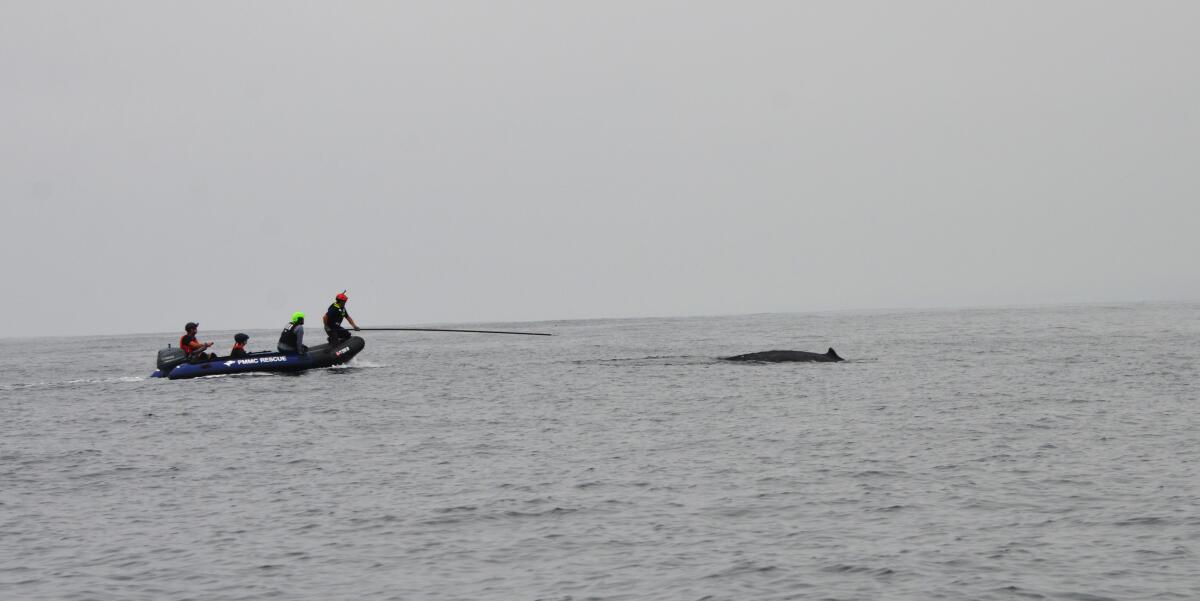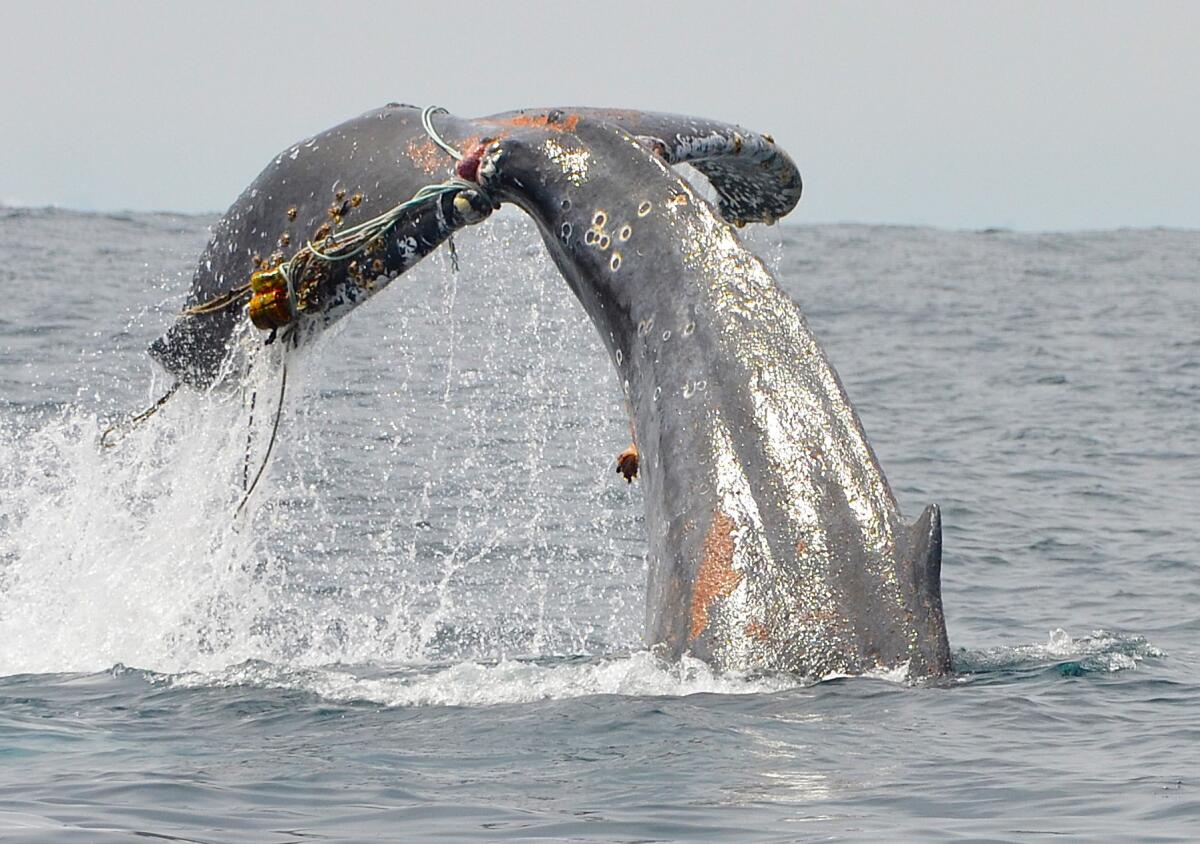Entangled humpback whale is finally freed off Dana Point

- Share via
The young whale was seen off Southern California, struggling, its tail flukes dangerously entangled in rope. The animal may have been injured for as long as half a year.
After a week of tracking and near-misses, a crew from the National Oceanic and Atmospheric Administration freed the juvenile humpback whale Friday.
On July 13, a whale-watching boat encountered the rope-snarled animal and reported it to NOAA. For the next week, crews from the agency’s large whale entanglement response network made near-daily excursions to search for the injured whale, said Justin Viezbicke, the agency’s California marine mammal response stranding coordinator.
On July 15, the team spotted the whale off Dana Point, but the weather turned bad before they could attempt to free it. The next day they found the animal in the same area, but nearby jet skiers accidentally scared it away before rescuers could get close enough to help.
It was seen near Newport Beach on Wednesday and Thursday, then returned to Dana Point on Friday. The rescue attempt was on.

For several hours, the NOAA boat traveled alongside the animal as it surfaced for air and dived back into the sea. The mammal was about 30 feet long, with rope from fishing equipment wrapped tightly around both tail flukes.
“Being in the right place at the right time was very difficult,” Viezbicke said. “This whale was super skittish and wasn’t comfortable with us being around it.”
At last the crew got close enough to cut through the rope. For the next 60 to 90 minutes, the whale swam, dived and slapped its tail against the water in an effort to dislodge the remaining equipment, Viezbicke said. Once it had, it slipped back into the water and swam off. Whale-watching boats in Orange County have spotted it swimming in the days since.
Though the rope is gone, there is still concern for the animal’s future. NOAA estimated that the mammal had been entangled in the fishing line for at least three to six months, causing “some serious damage” to the flukes, Viezbicke said. It also appeared to have a significant amount of whale lice, which is often an indicator of poor health.
“We are hopeful that with the gear off it will make a full recovery,” he said.
Instances of humpback whale entanglements with fishing gear have climbed sharply in the last decade, thanks to a chain of events sparked by warming seas.
From 2014 to 2016, a Pacific Ocean heat wave forced anchovies and other humpback prey closer to shore and into the path of Dungeness crab fishing equipment. The same heat wave also delayed the crab fishing season to a time that coincided with the whales’ migration season.
Statewide, NOAA typically receives 15 to 20 reports per year of whales trapped in fishing lines or other human-made debris in the ocean, Viezbicke said. Yet such reports are likely only a small percentage of total cases.
The investors proposing a new city in rural Solano County will pull their measure off the ballot for at least two years while they fund a full environmental review.
“Unfortunately, most whale entanglements go undetected,” said Ashley Blacow-Draeger, Pacific policy and communications manager for Washington, D.C.-based nonprofit Oceana. Researchers who have tracked observation of entanglement scars on whales estimate that only 5% to 10% of such incidents are recorded.
Oceana has been working with fisheries to test ropeless fishing gear that vastly reduces the risk of wildlife entanglement, Blacow-Draeger said. California issued experimental permits for the pop-up, ropeless equipment in the 2023-24 season, and permitted fishermen started selling crabs caught with the new gear this spring.
Oceana is pressing for the state to authorize commercial use of the whale-safe equipment by the 2025 spring season, Blacow-Draeger said.
Unprecedented numbers of gray whales are being spotted in San Francisco Bay, and nobody really knows why. Experts only have educated guesses about the prevalence of porpoises, dolphins and humpback whales too.









